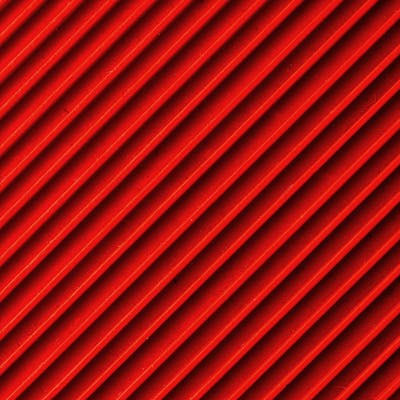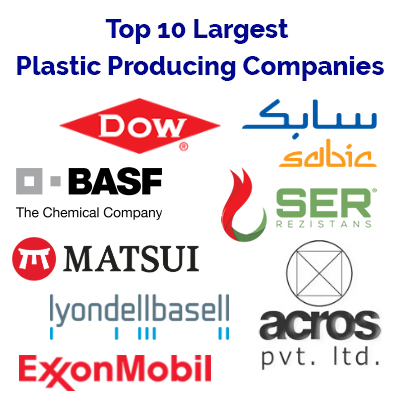Retrofit Homogeneity - Melt Blenders to Step Up Efficiencies in Extrusion Lines

Many extrusion processes cannot be operated at the maximum output rate specified by the producer. The maximum production capacity is rather determined by the quality requirements of the extrudate. High output rates then lead to unacceptable variations in layer thicknesses, to uneven or rough surfaces, sink marks or other quality problems. With quality requirements constantly increasing, and with polymer processing growing more difficult, start-up and adjusting the optimum operating point takes more and more time. Both factors diminish productivity, cause expenses, and can sometimes be quite unnerving, too.
Quality Problems Due to Temperature Differences
Extruders are supposed to melt the poly- mer and convey it under high pressure at a constant rate. The extruder itself should be as compact as possible as well as gen- erate high output rates. To meet these re- quirements, the polymer needs to melt within very short time, with driving tem- perature differences at a high level. Due to the nature of the process, high tem- perature differences within the melt are obtained. The difference between high- est and lowest melt temperature mea- sured in the extruder outlet may well be above 15 °C. And downstream devices such as melt pumps or screen changers also generate temperature differences. The variation in temperatures within the melt may cause in many cases quality problems. This is due to the fact that a temperature gradient in the melt means flow and cooling behaviors will vary, too. The flow profile in the case of laminar plastic melt flow is parabolic – meaning the melt flows much faster in the center than in the boundary section. This leads to significant differences in melt resi- dence times. High residence times and temperature peaks may then yield the undesired effects of polymer degrading and building of deposits.
These are the challenges the static mixer tackles.
The Effects of a Melt Blender
A well laid out melt blender is able to equalize temperature differences effec- tively. A melt blender by Promix Solutions AG, Winterthur, Switzerland, can diminish temperature differences by a factor of 5 to 12, subject to layout. Correspondingly, it reduces a 15 °C temperature variation over the channel cross section down to 1.25 to 3 °C. Figure 1 presents typical temperature distributions in the melt at the extruder outlet with and without a Promix melt blender. The melt blender’s geometry decides on the question whether the maximum benefit is achieved. The Title fig- ure shows a static mixer of the latest gen- eration. In an extremely efficient way, this melt blender continuously exchanges central and boundary flows, thus yielding high mixing performance at short in- stalled length. What is more, the parabol- ic flow profile approaching the extruder outlet is converted effectively into a plug flow. Correspondingly, the melt dis- charged from the melt blender flows at perfectly constant speed and tempera- ture. This is the basic prerequisite for opti- mum process control. Thanks to the pro- cess window considerably enhanced, set- ting process parameters is much easier and faster. Even with high extruder out- put rates, layer thickness tolerances, sur- face qualities and other quality character- istics can be adhered to within the ranges defined. Additionally, distribution of addi- tives and color pigments within in the melt is far more homogeneous. This can, for example, improve the protective ef- fect of an UV stabilizer added as a master- batch, or may allow for lower dosage. To provide for optimum benefit of the melt blender, it should sit at the end of the pro- cess line, if possible, i.e., right in front of the die or feed block.
Good Cleaning Behavior and High Strength
When choosing a melt blender, it is cru- cial for the unit to have outstanding self-cleaning properties, in addition to good mixing performance. This is to make sure the flow passes homoge- neously through the entire blender, in or- der to prevent deposits that will increase pressure loss and require additional cleaning. The monolithic structure of the patented SMB plus melt blender raises the bar in this respect. Extrusion trials have shown that a red colored polypro- pylene is 100 % removed by a subsequent colorless PP after a cleaning time of only 5-6 times the melt blender volume (Fig. 2). Following this in-line cleaning, no traces of red color could be found, not even when disassembling the blender. This op- timum self-cleaning behavior prevents building of deposits and enables the change of polymer or color within a very short period of time. However, only if the blender housing is exactly tuned to the melt blender and its interfaces an opti- mum cleaning behavior can be achieved. It is a known fact that the devil is in the details, which is why it is recommended to purchase melt blenders as system solutions including their specially de- signed housings and suitable connection adapters.
Mechanical strength is a critical as- pect of melt blenders. Under extreme cir- cumstances, e. g. start-up after a short- ened heating phase, incorrect lay-out or insufficient design of melt blenders may even lead to destruction of the mixer structure, as well as of downstream com- ponents such as feed blocks, dies and cal- ibration units. This is why melt blenders must have a robust design and must be made of corresponding high-quality ma- terials by suitable production methods. While, in industrial practice, one always starts from the worst-case scenario, it is recommended to use melt blenders made of highly rigid materials and with very thick-walled structures only, as can be seen in the Title figure.
Retrofitting Demands
In particular, when retrofitting an extru- sion line with a melt blender, the space available is often limited. Highly efficient mixers with short installed lengths and low pressure loss have the edge over larger units here. In most cases, such types of mixers can be integrated very easily into the existing plant, without having to displace the extruder or cool- ing line. If using pressure drop-opti- mized melt blenders, the extruder is usually able to make up for the addition- al pressure drop without problems. If re- quired, an additional melt pump is very helpful here, but, in fact, is rarely neces- sary.
Conclusion
Retrofitting extrusion lines with melt blenders is relatively easy and inexpen- sive. This improves not only product qualities, in many cases it also steps up outputs and reduces start-up times. The key to success is to make sure the melt blender is designed to fit the respective case of application in an optimum way. Apart from mixer geometry and size, this comprises tailored mixer housing, the method of installation as well as the ro- bustness of the overall solution.



